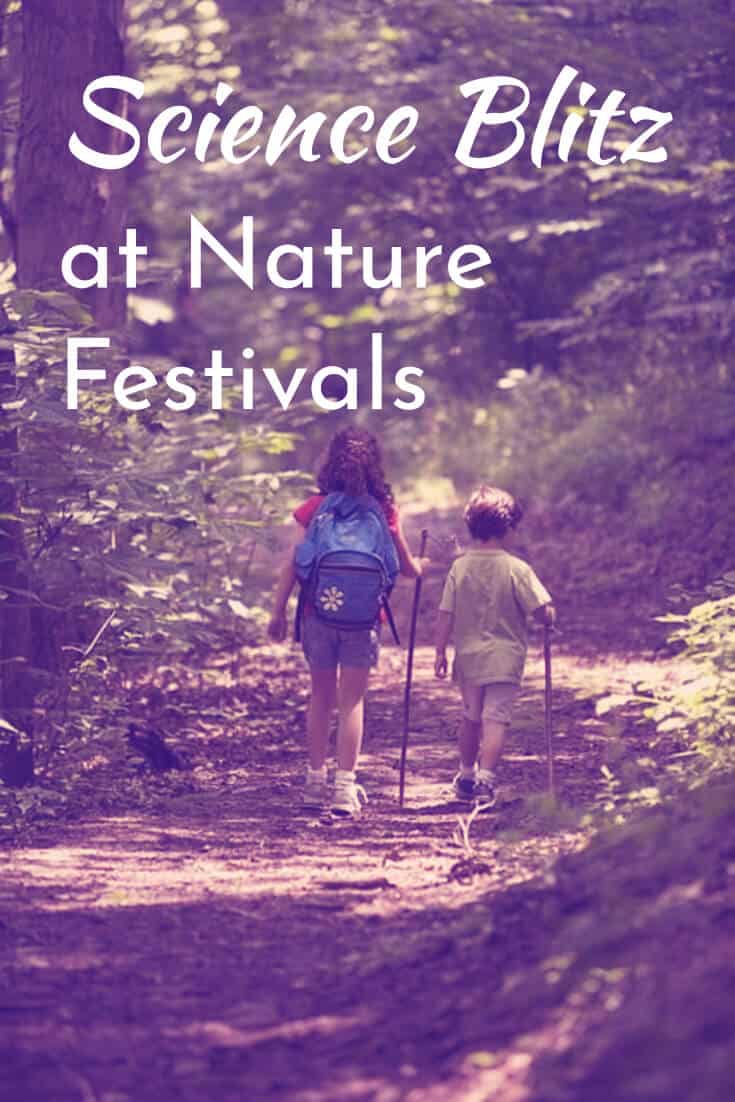Science Blitz at Nature Festivals

The loggerhead shrike, a “passerine” bird, widely distributed across southern Canada, the contiguous USA, and Mexico, impales its prey on a sharp thorn and proceeds to eviscerate it. In the alvar, where we are strolling with our guide, we spot the remains of enormous grubs stabbed onto the trunk of a tree as if the bird was using the jutting thorn as a spear. The shrike can either use the thorn to fasten and store its food to return to at a later time or tear off flesh by using the projection as an anchor.
As macabre as this practice sounds, it is fascinating to my two daughters who are joining me at the Carden Nature Festival, an annual three-day event that attracts die-hard birders and naturalists alike.
Nature Festivals are ideal for providing focused environmentally-themed science to your homeschool curriculum.
Where to Find Information on Nature Festivals:
The Natural Travel Network compiles an impressive list of nature travel resources worldwide including birding festivals, field trips, paddling adventures, hikes, and lectures, and includes a drop-down menu of all geographic regions of the world.
Click here for the Birding & Nature Festival Directory
We first fell in love with the Carden Nature Festival, which occurs in Central Ontario on the first weekend in June, when my girls were the only participants under the age of 60. Die-hard nature lovers seemed to thrive under the curiosity of the children, and they gave them much attention and explained things in great detail. Canada does not have a monopoly on die-hard naturalists, as the directory suggests, festivals occur in places as far away as Papua New Guinea and in every month of the year!
What Kind of Science?

Before we toured the grounds of the loggerhead shrike habitat, we visited the propagation and release site of the Eastern Loggerhead Shrike. Wildlife Preservation Canada manages a captive breeding program to restock the endangered population.
We met the university students who live and work on the site; they were responsible for the day-to-day care of the breeding pairs, from providing them with fresh writhing grubs to observing captive pairs in field breeding enclosures.

Where do Festivals Take Place?
Most are organized at State Parks or wildlife refuges. The Carden Nature festival occurs every spring near our hometown on a plain, unique to our region, called an alvar, a rare habitat that is home to wildflowers, native grasses, invertebrate species and a rich variety of birds. The regional conservancy reached out to local landowners to form partnerships geared to protecting the land and its imperiled habitat.
Our favorite sessions took place among the prairie smoke, where we hiked to identify dragonflies, or spiders, or to count the number of squirming grubs the loggerhead shrikes have consumed.
Other sessions included learning about the habitats of crayfish, recognizing poison ivy and identifying birds by their call. We could cram as much as thirty-two hours of science into the girls’ brains over the weekend event, essentially fulfilling their entire science curriculum for the year, (as much as we could muster for my artsy daughters).
What to Expect at a Nature Festival

If children can tolerate two to three hours of light hiking in the brush, they will manage fine. It’s not a constant walk; we stopped periodically to examine life all around us. Most of the members of our group were retired, older enthusiasts so a slow pace was the norm.
Sessions are led by naturalists, who guide groups of about ten participants into the brush. We typically arrived at 9:00 a.m. for a morning hike. The naturalists were highly educated in their field, a fact I cherished as my girls bent over to look at salamanders under the tutelage of these wise people.
Around noon, we arrived back at the community hall, which is ground zero for amassing the participants. There we ate a picnic lunch on a grassy mound surrounded by whizzing damselflies. After lunch we continued onto to our next workshop then went home to pick up dad, grab a bite, then return in the evening to study the flight patterns of moths flitting against an illuminated white sheet.
Before we wrapped up our day, we moved over to a field to hear the howls of the wolves while sketching constellations so vivid in the night sky.

The workshop spaces filled up quickly, but local organizers made sure there was plenty to choose from: from identifying reptiles, birds, and insects, to learning about medicinal uses of plants from a First Nations perspective. Diversity was their strength - one year we even attended a meditation session on Lake Dalrymple.
As years have progressed, the organizers have channeled much of their energy on creating family-friendly activities. Now they offer hay rides, birdhouse building, interactive exhibits on animals and much more. There is also live music, vendors, good food and displays in the Recreation Centre.
Now that the girls are older, part-time jobs and social excursions crowd their schedules, making it impossible to dedicate time to the weekend-long event, but they remember hiking in the alvar fondly. Their respect for nature and wildlife has evolved, I believe, because of the influence of those naturalists who didn’t even realize they were helping me homeschool my kids.








Those pictures are fantastic.
Is there a directory of nature festivals where I can search for local ones? Or is the best way to just use Google?
Hi Summer Joe, I found this one to be quite comprehensive: http://naturetravelnetwork.com/events-festivals/birding-and-nature-festival-directory/